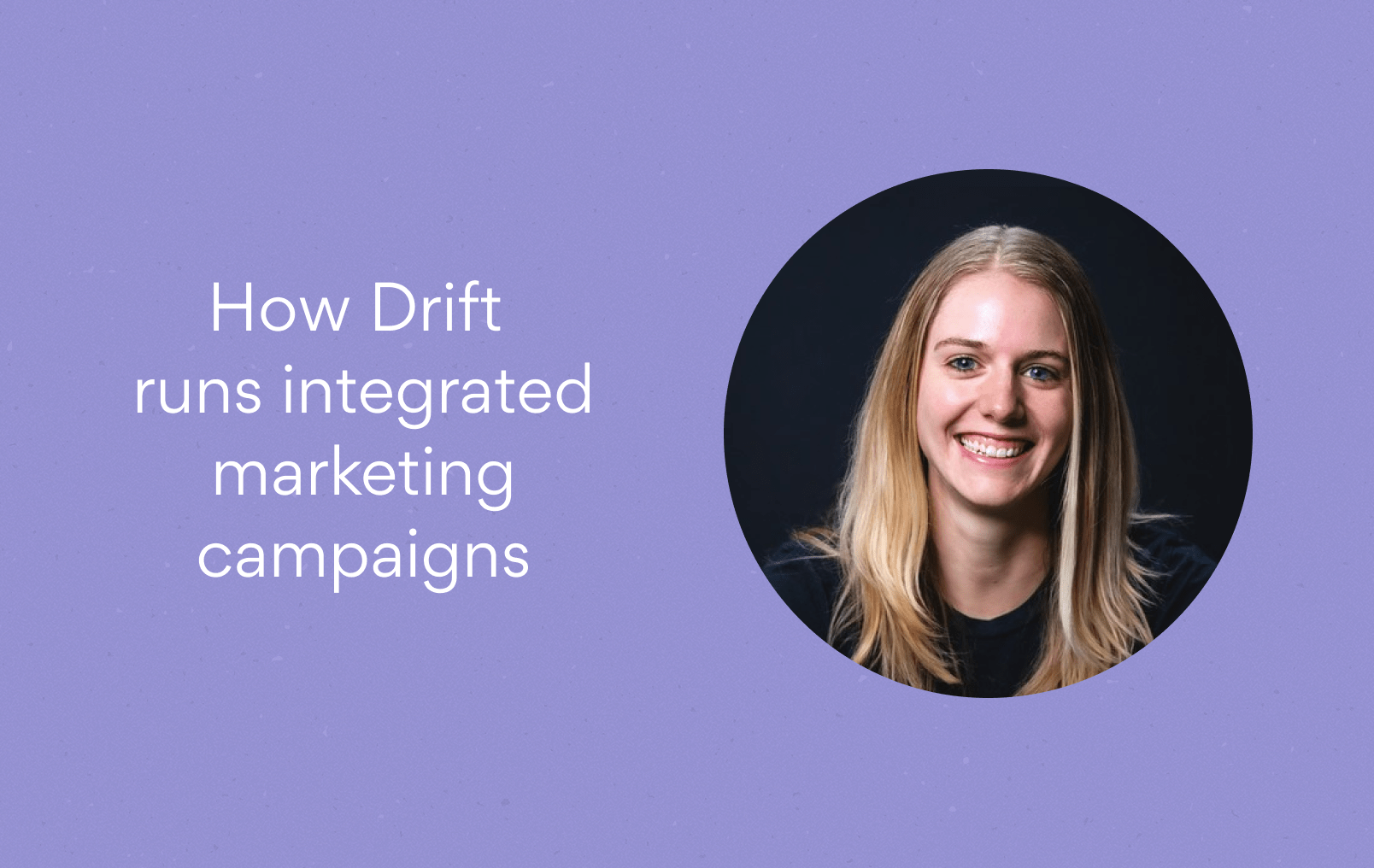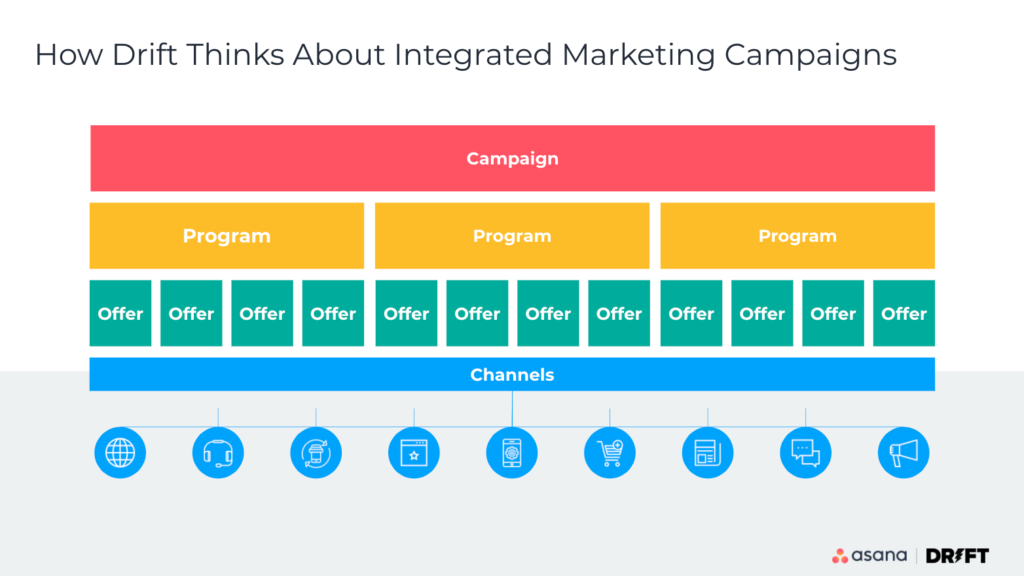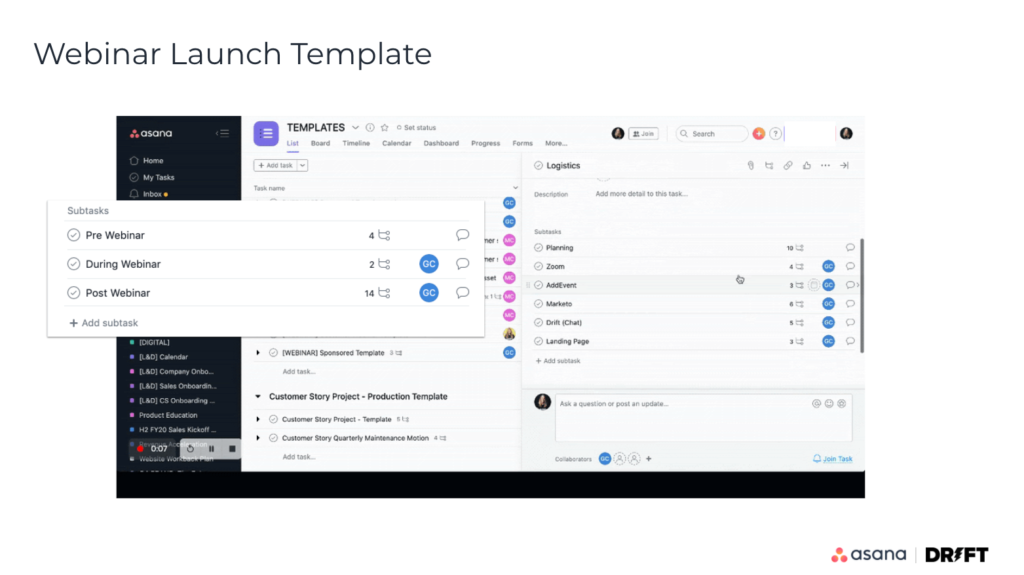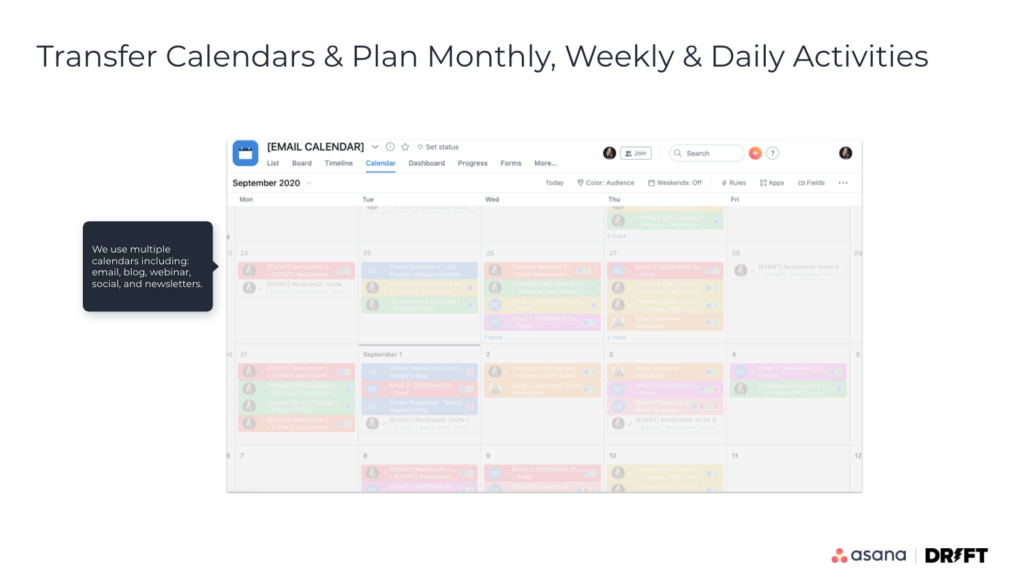How Drift runs integrated marketing campaigns in a remote world

Editor’s note: This is a guest post by Matilda Miglio, Senior Marketing Manager at Drift.
Work looks a little different these days.
But in this new all-remote world, one thing hasn’t changed: frenzied deadlines, herding cats, and long back-and-forth feedback and proofing copy, design, or internal presentations. You know, the busy work.
So how do you conquer busywork and stay more connected? That was the question we asked ourselves here at Drift, a Revenue Acceleration Platform that provides sales and marketers with the tools they need to deliver real-time, personalized customer experiences and get to revenue faster. Our marketing team of 40 got to the point where we were doing a million things at once, and we needed a way to tie it all together. The only way we were going to keep growing was through a seamless GTM strategy.
A seamless GTM strategy requires cohesion. For Drift’s marketing team, that cohesion came from integrating our marketing campaigns. It’s my job as a marketing manager to make sure everything stays connected. Today, I’m here to share exactly how we make the magic happen.
What is an integrated marketing campaign?
Every kind of marketing can be a campaign. Email, social, acquisitions, you name it. But an integrated campaign brings these different channels together to maximize your offerings and create that cohesive full-funnel message. What’s important is that your team orients their efforts around the same shared activities and works in lockstep to achieve great business results.

For us, it starts with an overarching integrated campaign. It’s the broad story we want to tell. From there, we dive into programs, which divides that broad message into key themes, like a thesis in a paper. Once we know that, we define our offers—things like webinars, events, ebooks, and other hooks to entice prospects and customers back into our sales cycle. Then, and only then, do we determine which channels fit into the story.
That way, we’re determining the why and how before we ever get to the what.
Drift’s integrated marketing objectives

We switched to this model to provide a better customer experience, but also to empower our team to feel connected to one another. With an integrated marketing campaign:
- We share the same activities, working toward the same story.
- This means we work towards the same goals. Each program, offer, and channel is part of a pipeline goal agreed upon at the beginning of the quarter.
- Working together means we’re increasing the impact of the activities we choose. When you create a better customer experience that has seamless messaging, you’re going to be more engaging—and you’re going to have higher conversion rates.
- The higher your conversion rates, the less work you have to do, giving you time and space to increase the quality of your work, which starts a virtuous cycle.
- With an integrated campaign comes transparency and accountability, especially in a tool like Asana. My job is to help make sure these campaigns keep moving forward, so I can go in and understand, “Hey, where are we at? How are we doing?”
That way, I can plan defensively around what we need to do to stay on track with our pipeline goals.
What Drift’s planning process looks like
We follow a rigorous planning process. Here’s how it goes:
- Our first meeting with directors defines the narratives. Which stories do we want to tell?
- Then, we brainstorm the campaigns that suit those narratives with the broader team during a kickoff meeting and program planning meeting. How do we generate campaigns and programs that work toward those narratives?
- We bring in the tactical leads then to determine the offers. What offers will you make that fit those themes? So if you’re running webinars and you walk in, you can easily say, “Well, I have five ideas because I know the story I’m telling and the audience we’re targeting.” Boom, boom, boom, you’ve got your 10 webinars for the quarter.
- Once the offers are finalized, we build the rest of the channels and tactics around them, like scheduling out emails and blog posts. How can we work backward to hit our goals?
It’s all right there in Asana. Our top bar is the campaign, and within that campaign, we have our programs. From there, we use brackets as an easy visual to see what offers we have on tap, with custom tags we can see any other information we need for a specific subtask. I can pop in anytime and say, “What’s happening with my Q4 marketer campaign?” and I know exactly where to find it.
Here’s what it looks like in action.
Example: A Marketer’s Guide to Navigating COVID
Like any company, we had to pivot quickly to respond to our audience when the COVID-19 pandemic hit in March 2020. In a chaotic, uncertain time—where many of our customers were struggling to pivot themselves—we knew we had to do something to help. So we started with the question on everyone’s minds: “How do marketers navigate this new world?”
As part of that campaign, we launched an e-book…

…ran a webinar,

…and wrote emails, direct mail, and blog posts, which we coordinated on our calendar in Asana.

The reason we could move so fast? We had a clear, articulated process in place through Asana, so we could pivot quickly and have the most impact on our customers and on our business. (Plus, we created some pretty cool content, if I do say so myself.)
Want to learn more about how Drift runs integrated marketing campaigns in Asana? Watch the webinar.
Matilda Miglio is a Senior Marketing Manager at Drift, where she spends her days executing integrated and ABM campaigns and trying to find new and innovative ways to level up her digital marketing game.

